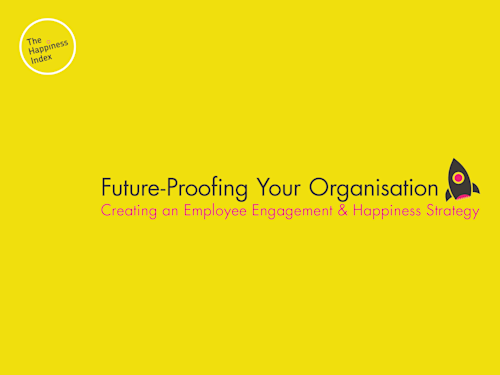
Creating an Employee Engagement AND Happiness Strategy
Many organisations are becoming aware of the need for more data on their employees engagement and happiness. This has lead to a rise in pulse surveys and always-on listening. If you’re trying to decide between these two approaches to gathering more feedback, then this blog post is for you as we guide you through the differences and strengths of each approach.
An employee pulse survey is a short survey usually designed to “take the pulse” of how people within an organisation are feeling. Organisations use them to understand how engaged their people are at a given moment in time.
There are several benefits to employee pulse surveys:
Quick Answers - Pulse surveys tend to be short, so you’re able to get data from your team quickly on any topic that you need feedback on. Typically survey windows are short (ie. only giving people a few weeks to respond) so you will get
Takes Little Buy-In From Employees - As there are only a few questions, pulse surveys only take a little time from your people, which means that you’re more likely to get more responses. This results in more accurate data.
Highly Specific - You are able to ask highly specific questions to get the data you need for the exact situations you find yourself in. This means you can get the data you need in order to make the decisions you have before you.
Flexible To Your Exact Needs - You can change your pulse survey every time you send it in order to meet your needs.
There are a few challenges to bear in mind if you’re considering pulse surveys for your organisation including:
Data Accuracy - With a short turn-around you may find not everyone gets to the survey and that those who are on leave for whatever reason don’t reply, which could have impacts on the accuracy of your data.
Lack Of Context - Without clarifying questions you may find you lack the context to really understand the feedback you are given which may make it harder to implement changes or make decisions off the back of your data. This may result in the need for further surveys.
Lack Of Benchmarking - If you’re changing questions frequently, you will only have feedback from one exact moment in time. This will mean you’re not able to benchmark against yourself at other points in the year. Not only this but highly individualised questions will mean a lack of benchmarking against other organisations too.
Unpredictable - Pulse surveys tend to be ad hoc, this means that your team won’t necessarily know when to expect them or what they will cover. This could affect the quality of your data.
Always-on listening is a style of employee engagement feedback which allows your team to give feedback whenever and wherever they feel is appropriate. This means that you’re getting candid, in-the-moment feedback on a variety of topics as they arise for your employees.
We recommend always-on listening as it’s the most employee-centric way of gathering feedback from your people. It’s a great way of gathering on-going feedback and embedding a culture of listening into your organisation so your people truly feel listened-to and appreciated.
We’ve already mentioned why we recommend always-on listening over pulse surveys for employee engagement, but here are a few more things to consider:
Constructive Feedback - Because you’re gathering feedback from your people when they have something to say, you’re likely to get constructive feedback that can be directly actioned.
Give Your People A Voice - Neuroscience tells us that your team is likely to perform better when they feel listened to and appreciated. With always-on listening, you’re allowing your people to give feedback on the topics they choose when they choose, giving them a real voice rather than stifling their authentic feedback within specific parameters.
Full Access To Benchmarking - Through listening to your people at all times, you’re able to really understand the patterns of feeling and engagement within your organisation. For example, you might be able to see how people feel during busy seasons.
Real-Time Insights - Understand how people are thinking and feeling in the moment. This means you’re able to really understand what is affecting feedback and
Sense Check Decisions - Often you’re able to gather candid feedback to decisions. Although you’d be able to run a pulse survey following decisions, having always-on feedback allows you to understand reactions both as the decision is announced, and also as people are able to process the decision.
Contact Point For Remote Workers - for organisations who have a remote or hybrid model, you’re able to provide a consistent contact point where you’re able to give all your people an avenue for connection regardless of where they are.
We’re big fans of always-on listening, but as with any employee listening approach there are, of course, challenges. However, with the correct tools and planning in place these can be mitigated. Here's what you might want to consider:
Lots Of Data - Many organisations find they get more data with always-on listening. This is why our platform helps to aggregate the data for you using AI to help you to understand larger volumes.
Requires Substantial Time Input - It’s important to respond to all feedback given, so always-on listening does require you to put aside time for this. Our platform helps with this by allowing you to respond to feedback anonymously within the platform, quickly and easily.
May Lack Specificity - Always-on feedback means that you’ll likely always have the same question within your engagement survey. However, you can encourage feedback on specific topics to help monitor certain areas of your organisational life or culture.
It is important to remember that neither pulse surveys nor always-on listening should make up your entire listening programme. Gathering in depth feedback on specific subjects should always be part of your plans.
Through our platform you’ll gain access to our employee voice offering, allowing you to gather feedback on an always-on basis, but also our library of 20+ employee surveys. You may find that your always-on feedback reveals weaknesses or even strengths that you want to dive into in more detail. That’s why we have a range of surveys covering everything from onboarding to understanding your culture more generally.

Linked to Happiness & Engagement in our neuroscience methodology... learn more
The Happiness Index helps organisations measure the key employee engagement AND happiness drivers to power their people strategy.
Our unique platform offers the products, insights and tools to shine a light on your cultural health and empower management to drive thriving cultures.
Our neuroscience-based pre-built surveys measure the full employee experience - from onboarding to exit to empower and enable organisations to understand their people and create data-led action plans.
